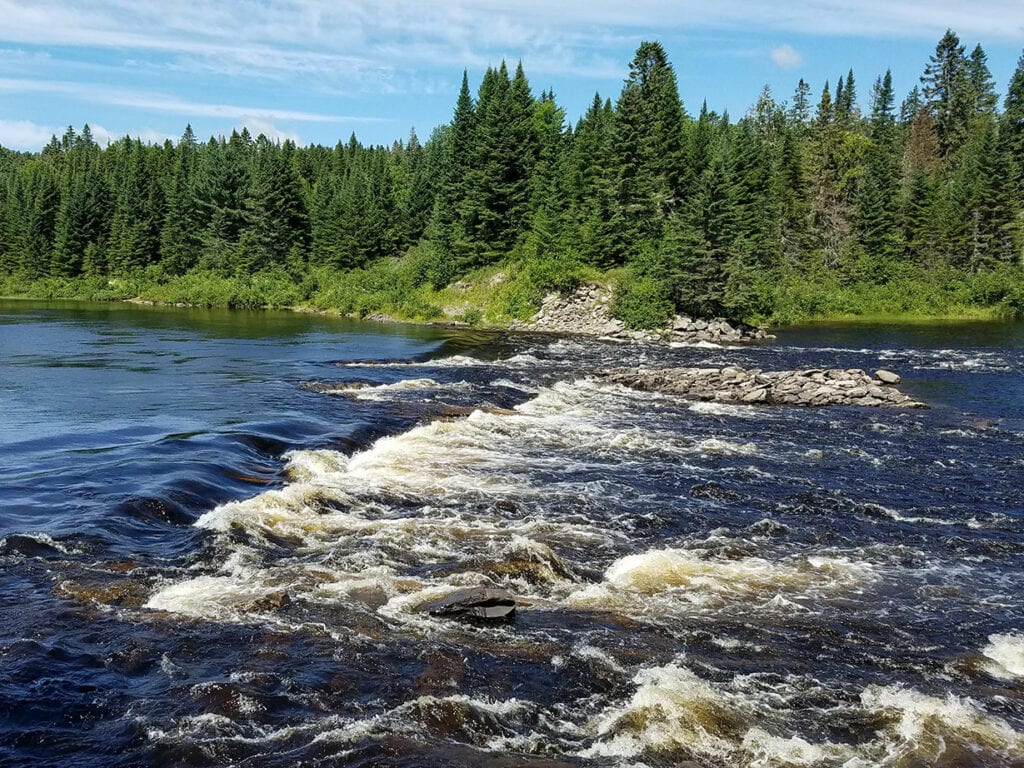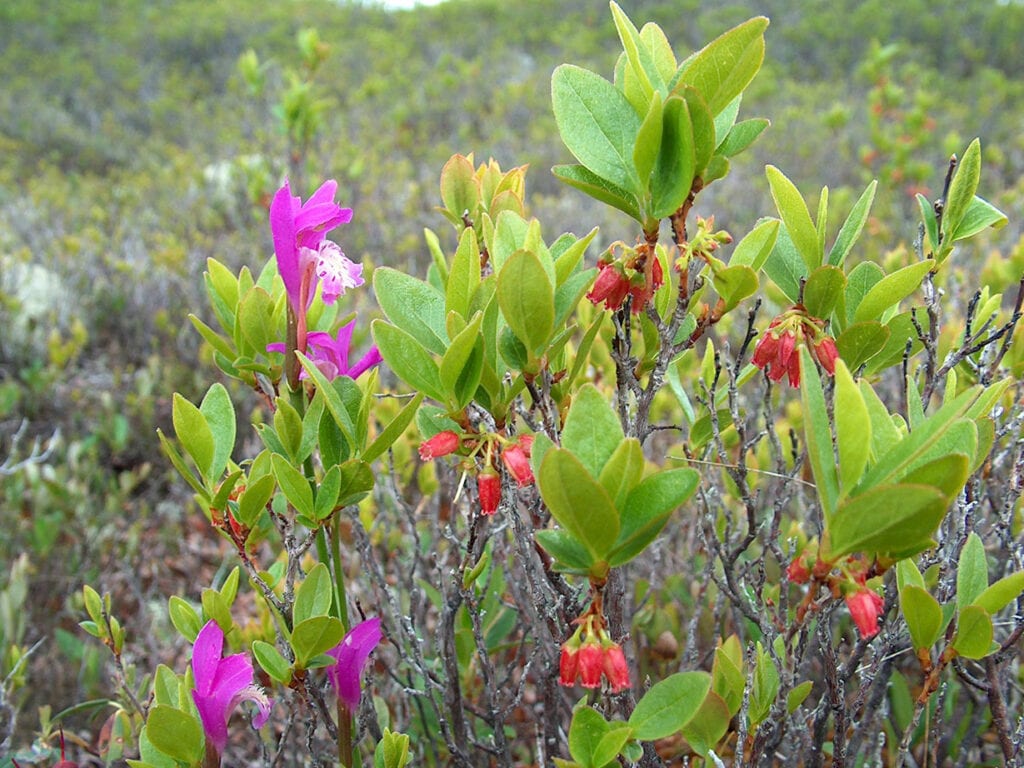Flags are symbols that can mean different things to different people, but there is generally a shared understanding of the values they represent.
Wilderness is similar in that it embodies an ideal ecological state. A mental picture of wilderness is easy to call up: You might imagine free-flowing rivers, bountiful wildlife, or dark, starfilled skies. While the precise definition of wilderness is subjective, the value of protecting wild, untamed nature unaltered by people is indisputable.
This summer NRCM is celebrating exciting milestones for some of Maine’s wildest places: the Allagash River and the state’s Ecological Reserve System. Though the world has lost much of its wilderness and biodiversity to human activity, our vision of wilderness must continue to serve as a guidepost, reminding us of the countless ecological and social benefits derived from nature that we cannot afford to lose. This is especially important in Maine where remote ponds, tree-covered mountains, and vast forests dominate the landscape, and are source of recreation, jobs, and recovery for so many.

Allagash Wilderness Waterway by Emmie Theberge
On July 17, 1970, 92.5 miles of the Allagash became America’s first federally protected/state managed “wild” river when Interior Secretary Walter J. Hickel granted the state’s request to designate the Allagash Wilderness Waterway under the Wild and Scenic Rivers Act of 1968. As Maine’s only “wild” river, encompassing just 0.03% of Maine’s total river miles, it is in the public interest to keep it free-flowing and as undeveloped as possible.
Ask someone who has spent decades on the Allagash, like professional wilderness guide Alexandra Conover Bennett, why wilderness is important and she’ll tell you that when she has taken college students out on trips into northern Maine—to places more isolated than some people will ever get— something takes hold in the students. Facing the elements, learning self-sufficiency, and being alert are all part of the backcountry experience that “reconnects people with the land.” “The power of nature is everlasting, and it’s everywhere,” Alexandra says.
Protecting wild places is not just about being able to visit them– though going on an immersive camping or float trip is a very compelling reason! Nature offers an array of life-sustaining goods and services, the most critical of which—such as filtering air and water, providing food and building materials, sheltering wildlife, and sequestering carbon—could not happen without a healthy, thriving ecosystem.

Arethusa and Gaylusssaci at the Great Heath Ecological
Reserve, the largest peatland in the Downeast region. Photo courtesy Maine Natural Areas Program
On August 11, 2000, Maine created the Ecological Reserve System, a progressive natural resource management concept aimed at protecting the full range of the state’s 104 unique ecosystems. As of 2020, 17 sites covering more than 90,000 acres comprise the system, leaving a lot of opportunity for growth.
Andy Cutko, Director of Maine’s Bureau of Parks and Lands, explains, “Unmanaged forests can provide unique habitat for a number of species, including ones we don’t often think about, such as invertebrates, mosses, and lichen.” Referring to ecological reserves as “life rafts,” he acknowledges the important role they serve for research and education, especially for monitoring the impacts of and building resilience to climate change. “Old forests sequester and store huge amounts of carbon,” he says, noting that they can be studied to track the long-term ecological impacts of climate change.
As we celebrate these two anniversaries, let’s double down on one of the core values that has driven NRCM for more than 60 years: The ideal of wilderness is an essential ingredient to Maine’s way of life, and these wildest of places must be a piece of a larger management plan for well-managed landscapes. We will never regret investing in natural resources and a healthy environment or striving for the “highest of heights” in our efforts.
—by Melanie Sturm, NRCM Forests & Wildlife Director









